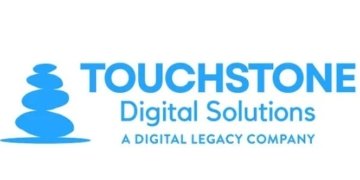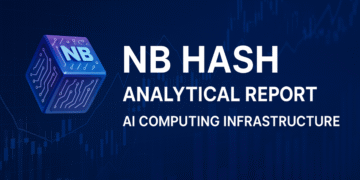In today’s digital landscape, business continuity is essential, and the ability to recover data quickly after unexpected events has become a strategic priority. As a result, Disaster Recovery as a Service (DRaaS) is experiencing significant growth as companies seek reliable solutions to minimize data loss and downtime. The global DRaaS market was valued at US$ 7.07 billion in 2021 and is projected to reach US$ 47.06 billion by the end of 2031, expanding at an impressive compound annual growth rate (CAGR) of 21.3% from 2022 to 2031. This comprehensive analysis explores the market’s dynamics, trends, challenges, and regional landscape, as well as the prominent players shaping the future of DRaaS.
Gain valuable insights into the Disaster Recovery as a Service (DRaaS) Market with our comprehensive research report sample- https://www.transparencymarketresearch.com/sample/sample.php?flag=S&rep_id=3622
Market Dynamics
Growing Demand for Business Continuity and Data Security
With the rise in cyber threats, natural disasters, and unforeseen disruptions, businesses are increasingly aware of the need for a reliable disaster recovery plan. Traditional recovery methods often involve substantial downtime and resource allocation, prompting a shift toward DRaaS. DRaaS enables organizations to replicate their data to a cloud environment, ensuring that critical operations can resume swiftly in the event of a disruption. This flexibility and scalability are major drivers behind the growing demand for DRaaS solutions across industries, from finance and healthcare to manufacturing and retail. Moreover, as businesses handle larger volumes of data, they require cost-effective solutions to ensure data security, and DRaaS offers a robust option for achieving this.
Cost-Efficiency and Scalability
One of the most compelling aspects of DRaaS is its cost-efficiency. Traditional disaster recovery solutions require high upfront investments in hardware and infrastructure. DRaaS, on the other hand, leverages cloud technology to provide disaster recovery at a fraction of the cost, making it accessible for small and medium-sized enterprises (SMEs) as well as large corporations. The pay-as-you-go model of DRaaS allows companies to scale their recovery needs according to business demands, providing both financial flexibility and resource efficiency. This adaptability has made DRaaS an appealing option for businesses seeking to optimize their disaster recovery strategies.
Recent Developments in DRaaS
In recent years, the DRaaS market has witnessed technological advancements and strategic partnerships aimed at enhancing service quality and reliability. Major players such as Microsoft, IBM Corporation, VMware, Inc., and Amazon Web Services have introduced enhanced DRaaS solutions that integrate seamlessly with existing IT ecosystems. Additionally, the development of AI-driven disaster recovery solutions is revolutionizing the market, enabling faster recovery times and predictive insights. These innovations are not only increasing the adoption rate of DRaaS but also setting new standards for recovery times and data accessibility.
Key Market Segments
Service Models: Managed, Self-Service, and Assisted
The DRaaS market is segmented into three main service models: managed, self-service, and assisted. Managed DRaaS offers end-to-end management of disaster recovery processes, providing businesses with a comprehensive solution where a service provider handles all aspects of data backup, replication, and restoration. This model is particularly popular among organizations that prefer a hands-off approach to disaster recovery.
The self-service model, on the other hand, gives organizations more control over their disaster recovery processes. With self-service DRaaS, companies can manage their own backups, set recovery points, and customize disaster recovery strategies according to their unique requirements. This model is favored by companies with robust internal IT capabilities.
Assisted DRaaS, a hybrid of managed and self-service, provides partial support from the service provider while allowing the client to maintain a level of control. This model offers a balanced approach, appealing to businesses that need guidance but prefer not to fully outsource their disaster recovery operations.
Deployment Models: Public Cloud, Private Cloud, and Hybrid Cloud
DRaaS solutions can be deployed in three primary cloud environments: public, private, and hybrid. Public cloud deployments are the most cost-effective option, offering scalability and ease of use, but may come with trade-offs in terms of data privacy. Private cloud DRaaS, while more secure, is often more expensive and resource-intensive, making it a choice for enterprises with high data sensitivity requirements.
The hybrid cloud model combines the benefits of both public and private clouds, providing enhanced security, flexibility, and control. Hybrid deployments have gained popularity as they allow businesses to keep critical data on a private cloud while using the public cloud for less sensitive information. As organizations increasingly adopt multi-cloud strategies, the hybrid cloud model is expected to dominate the DRaaS market in the coming years.
Visit our report to gain in-depth insights: https://www.transparencymarketresearch.com/disaster-recovery-a-service-market.html
Market Trends
Emphasis on Compliance and Data Protection Regulations
As data protection regulations such as GDPR and CCPA become more stringent, organizations are under pressure to ensure that their disaster recovery solutions meet compliance standards. DRaaS providers are responding by developing solutions that align with regulatory requirements, enabling organizations to secure data in a manner that complies with industry standards. This emphasis on compliance is expected to drive the demand for DRaaS solutions in regulated industries such as healthcare, finance, and government.
AI and Automation in Disaster Recovery
Artificial intelligence (AI) and automation are transforming the disaster recovery landscape, enabling faster and more efficient recovery processes. AI-driven solutions can predict potential failures, trigger automated backups, and reduce downtime, enhancing the resilience of DRaaS systems. Automation in DRaaS reduces human error, a common cause of recovery delays, and enables IT teams to focus on more strategic tasks. As AI technology advances, its integration into DRaaS will play a pivotal role in reshaping the industry.
Market Challenges
Data Privacy Concerns in Cloud-Based DRaaS
Despite its many advantages, DRaaS faces challenges related to data privacy. As organizations store more sensitive data in cloud environments, concerns about data security and unauthorized access increase. High-profile data breaches have raised awareness about the risks associated with cloud storage, and some businesses are hesitant to adopt cloud-based DRaaS solutions. Addressing these concerns requires DRaaS providers to invest in advanced security measures such as encryption, multi-factor authentication, and compliance certifications.
Managing Downtime and Recovery Time Objectives (RTOs)
Meeting recovery time objectives (RTOs) and minimizing downtime are crucial for DRaaS providers, as any delays can lead to significant business disruptions. Achieving optimal RTOs requires extensive planning and reliable infrastructure, which can be challenging, particularly for smaller providers. As competition intensifies, DRaaS vendors will need to enhance their service offerings and infrastructure to deliver faster and more reliable recovery solutions.
Regional Analysis
The DRaaS market shows strong growth potential across regions, with North America leading due to early adoption of cloud-based technologies and a robust presence of tech giants. Europe follows, driven by stringent data protection laws and a growing focus on digital transformation in enterprises. Asia-Pacific is emerging as a lucrative market, spurred by the rapid digitization of economies such as China and India and the increasing adoption of cloud services by small and large enterprises alike.
Key Players Shaping the DRaaS Market
The competitive landscape of the DRaaS market includes a range of leading technology companies and specialized providers. Microsoft, IBM Corporation, VMware, Inc., and Amazon Web Services, Inc. are major players known for their expansive service portfolios and global reach. Other notable providers include Acronis International GmbH, iland, Sungard Availability Services LP, Axcient, Unitrends, Infrascale, Inc., Cloudian, Nutanix, Carbonite, Inc., phoenixNAP, and Recovery Point Systems, Inc. These companies continue to innovate and expand their offerings through acquisitions, partnerships, and R&D investments to stay competitive in the rapidly evolving DRaaS landscape.
Future Opportunities in the DRaaS Market
The DRaaS market holds vast opportunities as organizations prioritize disaster recovery and business continuity. With an increasing emphasis on cloud adoption, data security, and regulatory compliance, the demand for DRaaS solutions will continue to rise. Companies that can offer flexible, scalable, and cost-effective recovery solutions, along with robust security measures, are well-positioned for growth. Additionally, as AI and automation become integral to disaster recovery, DRaaS providers who incorporate these technologies will have a competitive advantage.
Click Here to Purchase this Comprehensive Insights Report @: https://www.transparencymarketresearch.com/checkout.php?rep_id=3622<ype=S
More Trending Reports-
Managed Security Services Market: https://www.transparencymarketresearch.com/managed-security-services-market.html
Digital Experience Monitoring [DEM] Market: https://www.transparencymarketresearch.com/digital-experience-monitoring-dem-market.html
About Us Transparency Market Research
Transparency Market Research, a global market research company registered at Wilmington, Delaware, United States, provides custom research and consulting services. The firm scrutinizes factors shaping the dynamics of demand in various markets. The insights and perspectives on the markets evaluate opportunities in various segments. The opportunities in the segments based on source, application, demographics, sales channel, and end-use are analysed, which will determine growth in the markets over the next decade.
Our exclusive blend of quantitative forecasting and trends analysis provides forward-looking insights for thousands of decision-makers, made possible by experienced teams of Analysts, Researchers, and Consultants. The proprietary data sources and various tools & techniques we use always reflect the latest trends and information. With a broad research and analysis capability, Transparency Market Research employs rigorous primary and secondary research techniques in all of its business reports.
Contact Us:
Transparency Market Research Inc.
CORPORATE HEADQUARTER DOWNTOWN,
1000 N. West Street,
Suite 1200, Wilmington, Delaware 19801 USA
Tel: +1-518-618-1030
USA – Canada Toll Free: 866-552-3453
Website: https://www.transparencymarketresearch.com
Email: sales@transparencymarketresearch.com
This release was published on openPR.















